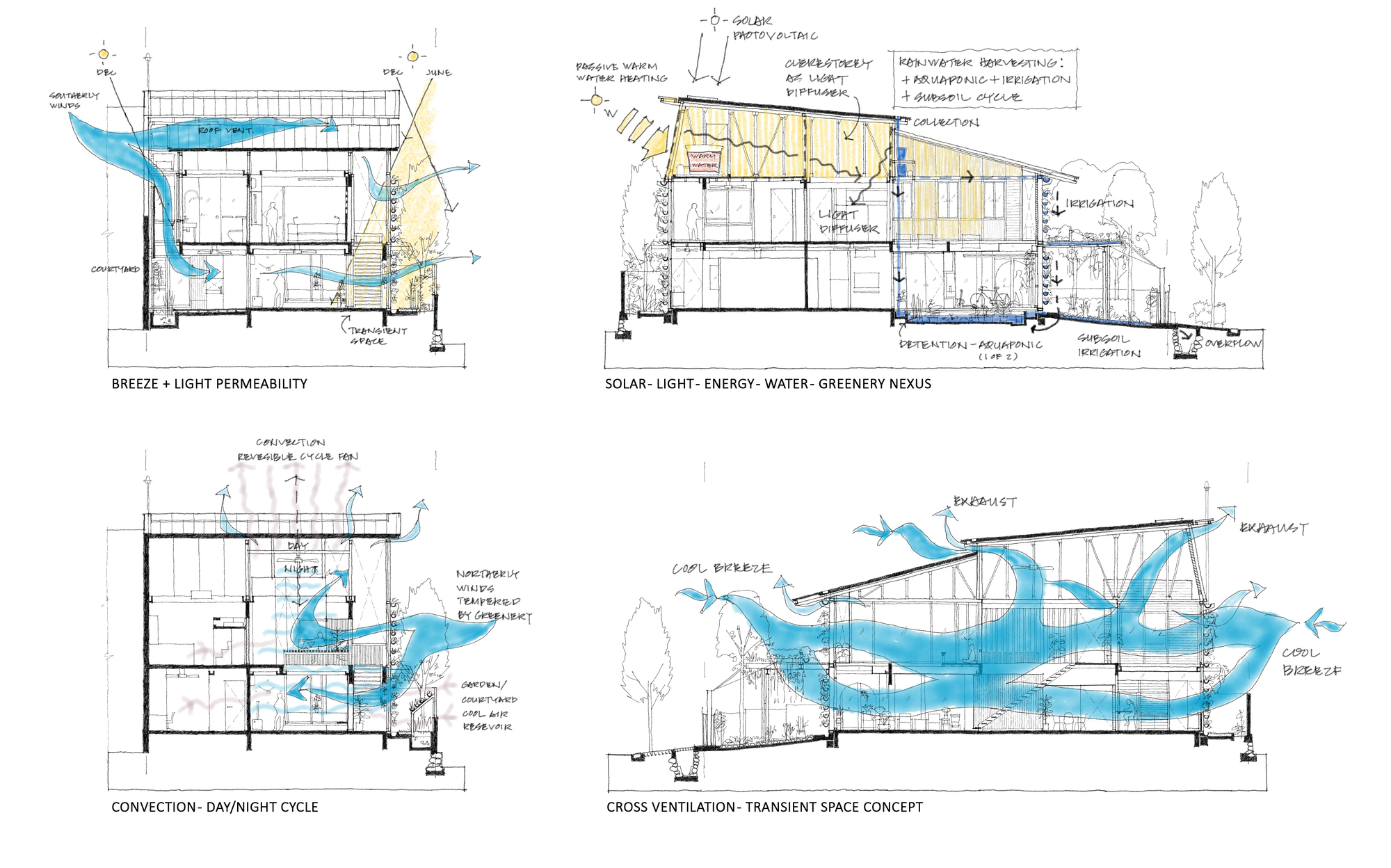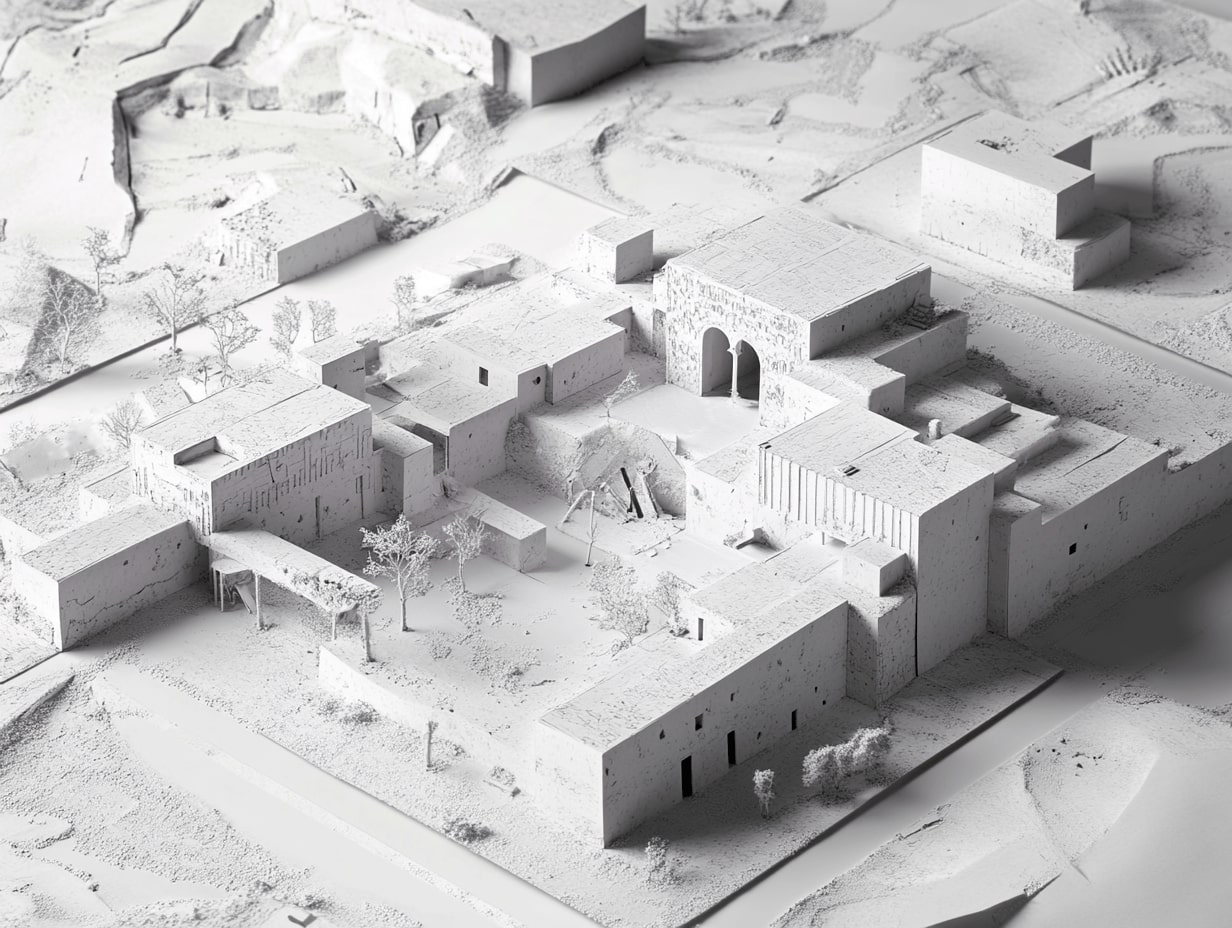- Home
- Articles
- Architectural Portfolio
- Architectral Presentation
- Inspirational Stories
- Architecture News
- Visualization
- BIM Industry
- Facade Design
- Parametric Design
- Career
- Landscape Architecture
- Construction
- Artificial Intelligence
- Sketching
- Design Softwares
- Diagrams
- Writing
- Architectural Tips
- Sustainability
- Courses
- Concept
- Technology
- History & Heritage
- Future of Architecture
- Guides & How-To
- Art & Culture
- Projects
- Interior Design
- Competitions
- Jobs
- Store
- Tools
- More
- Home
- Articles
- Architectural Portfolio
- Architectral Presentation
- Inspirational Stories
- Architecture News
- Visualization
- BIM Industry
- Facade Design
- Parametric Design
- Career
- Landscape Architecture
- Construction
- Artificial Intelligence
- Sketching
- Design Softwares
- Diagrams
- Writing
- Architectural Tips
- Sustainability
- Courses
- Concept
- Technology
- History & Heritage
- Future of Architecture
- Guides & How-To
- Art & Culture
- Projects
- Interior Design
- Competitions
- Jobs
- Store
- Tools
- More
Unlocking Comfort: The Role of Architectural Ventilation Diagrams
In the world of architecture, understanding the movement of air through spaces is crucial for creating healthy, comfortable environments. That's where architectural ventilation diagrams come into play. These diagrams serve as a blueprint for ensuring buildings not only stand up to aesthetic and structural standards but also promote well-being by facilitating optimal air circulation.

In the world of architecture, understanding the movement of air through spaces is crucial for creating healthy, comfortable environments. That’s where architectural ventilation diagrams come into play. These diagrams serve as a blueprint for ensuring buildings not only stand up to aesthetic and structural standards but also promote well-being by facilitating optimal air circulation.
From the early use of ventilating fires in the 18th century to the sophisticated computational fluid dynamics of today, the journey of ventilation strategies has been marked by innovation aimed at combating the spread of diseases through stagnant air. Architectural ventilation diagrams embody this evolution, capturing the complex interplay between airflow rates, directions, and the physical layout of spaces.
As we dive deeper, we’ll explore how these diagrams are crafted and the science behind them, shedding light on their critical role in modern building design. Understanding these diagrams is key to appreciating how far we’ve come in our quest to create spaces that are not just visually appealing but are healthy and sustainable too.

Table of Contents
ToggleUnderstanding Architectural Ventilation Diagrams
The Role of Ventilation in Building Design
In our journey through the evolution of architectural design, we recognize the vital role of ventilation in ensuring the health and comfort of indoor environments. Ventilation isn’t just a technical requirement; it’s a design element that directly impacts the quality of life. It serves as the lungs of a building, allowing for the exchange of air to remove stale, contaminated air and replace it with fresh, clean air. This process is crucial in preventing the accumulation of pollutants, moisture, and odors, which can compromise occupant health and damage the building structure over time.
Furthermore, adequate ventilation supports thermal comfort, ensuring that spaces remain neither too hot nor too cold, which is essential for both residential and commercial buildings. By promoting a steady supply of fresh air, ventilation plays a pivotal role in achieving sustainability goals, reducing the reliance on mechanical heating and cooling systems, and thus lowering energy consumption.
Key Components of Ventilation Diagrams
Architectural ventilation diagrams are complex representations that convey multiple aspects of a building’s ventilation strategy. At their core, these diagrams illustrate the airflow paths within buildings, showcasing how fresh air enters, circulates, and exits a space. Several key components make up these diagrams, each providing valuable insights into the building’s ventilation system:
- Air Inlets and Outlets: These mark the entry and exit points of air within the building. Their placement is meticulously planned to ensure efficient air movement across all areas.
- Airflow Directions: Arrows or similar symbols indicate the direction in which air moves throughout the building. This helps in understanding how air circulates, highlighting areas of potential stagnation or excessive draft.
- Ventilation Equipment: Items such as fans, vents, and air conditioning units are included to show mechanical means of ventilation. This information is crucial for maintenance and understanding how mechanical and natural ventilation systems complement each other.
- Zones of Different Air Quality: Diagrams often differentiate areas based on air quality needs. For instance, spaces like kitchens and bathrooms may have higher ventilation rates due to higher levels of moisture and odors.
- Thermal Flows: Some diagrams go further to depict how air movement contributes to thermal comfort, showing how certain areas might be cooled or warmed by the flow of air.
Architectural ventilation diagrams thus serve as a blueprint for ensuring that buildings meet the necessary air quality and comfort standards. By detailing how air moves within and through spaces, these diagrams provide architects, engineers, and building managers with a powerful tool for optimizing the health and sustainability of buildings. Through strategic design and understanding, we can harness the power of ventilation to create environments that not only meet technical standards but also promote the well-being of their occupants.

Types of Ventilation Systems in Architecture
In our exploration of architectural ventilation diagrams, it becomes evident that the design and implementation of appropriate ventilation systems are paramount to achieving optimal indoor air quality and thermal comfort. Our understanding deepens as we delve into the three primary types of ventilation systems utilized in architecture: natural, mechanical, and hybrid. Each system has its unique features, applications, and benefits, which we will elucidate further.
Natural Ventilation Explained
Natural ventilation leverages the natural forces of wind and thermal buoyancy to facilitate air movement in and out of buildings without the use of mechanical systems. This type of ventilation is not only cost-effective but also enhances the occupants’ comfort by providing fresh outdoor air and improving indoor air quality. Designing for natural ventilation requires careful consideration of building orientation, window placement, and the use of architectural features such as operable windows, vents, and atriums. These elements are strategically integrated into the building’s design to harness the wind for cooling purposes and to exploit thermal buoyancy for the removal of hot air from the interior. Natural ventilation is highly effective in regions with conducive climatic conditions, offering a sustainable option for reducing energy consumption related to heating, ventilation, and air conditioning (HVAC) systems.
Mechanical Ventilation Overview
Mechanical ventilation systems, on the other hand, utilize fans and ductwork to provide fresh air to a building’s interior and to exhaust stale air to the outside. This system is critical in buildings where natural ventilation is insufficient due to the building’s design, urban context, or local climate. Mechanical ventilation offers precise control over indoor air quality, temperature, and humidity levels, thus ensuring a consistent and comfortable indoor environment. These systems are essential in healthcare facilities, laboratories, and areas with high levels of indoor pollutants. While mechanical ventilation is more energy-intensive than natural systems, advancements in technology have led to more efficient and quieter mechanical ventilation solutions that contribute significantly to energy conservation and sustainability goals.
Hybrid Ventilation Systems
Hybrid ventilation systems, also known as mixed-mode ventilation, combine the best of both natural and mechanical systems. These systems adapt to changing weather conditions and indoor air quality needs by switching between natural and mechanical modes or using them concurrently to optimize comfort and minimize energy use. Hybrid systems often employ sensors and controls to determine the most efficient mode of operation based on temperature, humidity, and CO2 levels. This flexibility makes hybrid ventilation a versatile solution for a wide range of building types and climates. By taking advantage of natural airflows whenever possible and supplementing with mechanical ventilation when necessary, hybrid systems offer an effective balance between energy efficiency and indoor environmental quality.
Each of these ventilation systems plays a critical role in the architectural design process, influencing the overall comfort, safety, and sustainability of the built environment. As architects, we incorporate these systems into our ventilation diagrams to ensure they meet the specific needs of each project, taking into account factors such as building use, site conditions, and climate.

Interpreting Ventilation Diagrams
Interpreting architectural ventilation diagrams is crucial for optimizing the indoor environment. These diagrams provide a visual representation of how air moves within a space, offering insights into air quality, thermal comfort, and energy efficiency. Let’s delve deeper into understanding these diagrams by focusing on three key aspects: reading airflow patterns, deciphering ventilation rates and standards, and assessing performance through diagrams.
Reading Airflow Patterns
Airflow patterns are at the heart of effective ventilation designs. In interpreting these diagrams, identifying the direction and volume of airflow is pivotal. Natural ventilation systems, for instance, rely on wind-driven and buoyancy-driven flows. Here, diagrams often show how air enters through openings like windows or vents, circulates within the space, and exits through higher openings or dedicated exhaust points.
Mechanical systems, on the other hand, use fans and ductwork explicitly laid out in the diagrams. The arrows indicating airflow direction help us understand how fresh air is supplied, distributed, and exhausted. Hybrid systems, combining elements of both, present a more complex interplay of natural and mechanical flows, necessitating closer attention to ensure the diagram accurately reflects intended air movement strategies.
Deciphering Ventilation Rates and Standards
Understanding ventilation rates and how they comply with standards is integral to assessing a diagram’s effectiveness. Ventilation rates, typically expressed in cubic feet per minute (cfm) per person or per square foot, dictate the volume of air required to maintain indoor air quality. Standards such as ANSI/ASHRAE 62.1 provide benchmarks for minimum ventilation rates, ensuring that designs meet or exceed the required fresh air supply.
Diagrams that detail spaces with varying occupancy or pollutant sources must adjust ventilation rates accordingly. For instance, areas designated for heavy physical activity or with higher occupant densities, like gyms or conference rooms, show higher ventilation rates than standard office environments. These rate adjustments, aligned with standards, are crucial for tailoring ventilation to specific space requirements, promoting health, and maximizing comfort.

Assessing Performance through Diagrams
Performance assessment through diagrams involves evaluating ventilation effectiveness and air exchange efficiency. This task requires a keen analysis of airflow distribution and exchange rates within the depicted space. Effective diagrams illustrate not just the path of air movement but also areas of potential stagnation or insufficient air exchange.
Techniques like computational fluid dynamics (CFD) modeling or tracer gas studies, hinted at within advanced diagrams, offer quantitative insights into air distribution performance. Yet, even simpler diagrams can highlight potential issues, like uneven air distribution or areas prone to recirculation, guiding adjustments to optimize ventilation.
Interpreting architectural ventilation diagrams empowers us to visualize and evaluate the delicate balance of air movement within built environments. It enables us to identify effective ventilation strategies, comply with health and safety standards, and ultimately design spaces that ensure occupant well-being. Through meticulous examination of airflow patterns, adherence to ventilation rates and standards, and performance assessment, we can enhance the health, comfort, and sustainability of indoor environments.
Ventilation Strategies for Different Building Contexts
Tailoring ventilation strategies to specific building contexts plays a pivotal role in enhancing indoor air quality, comfort, and sustainability. Recognizing the diversity in building types, we dive into effective ventilation strategies for residential buildings and commercial or public spaces, ensuring optimized air circulation for health and comfort.
Ventilation for Residential Buildings
Residential buildings demand a unique approach to ventilation, focusing on balancing energy efficiency with optimal air quality. We understand the necessity of implementing systems that cater to the varied activities and occupancy patterns within homes. Mechanical ventilation systems, often complemented by natural ventilation methods, ensure a continuous exchange of indoor and outdoor air. These systems are designed to minimize energy consumption while ensuring that fresh air distribution reaches all parts of the home, including living rooms, bedrooms, and even areas with higher humidity levels such as bathrooms and kitchens.
Localized exhaust systems in kitchens and bathrooms are essential in removing contaminants and excess moisture directly from their source, preventing the spread throughout the home. Adopting smart ventilation solutions, which adjust ventilation rates based on occupancy and indoor air quality sensors, can significantly enhance energy efficiency and comfort. Ensuring that residential buildings comply with local building codes and standards, such as ASHRAE Standard 62.2, is crucial for maintaining safe and healthy indoor environments.

Ventilation in Commercial and Public Spaces
Commercial and public spaces, including offices, schools, retail environments, and healthcare facilities, require specialized ventilation strategies to address their specific needs. The principal objective is to manage air quality for the health and comfort of occupants while accommodating larger crowds and more diverse activities than typically found in residential settings.
In commercial buildings, Ventilation Rate Procedure (VRP) prescribes the amount of ventilation air needed to dilute indoor pollutants effectively. This is crucial in spaces where people congregate, such as conference rooms and lobbies, ensuring that CO2 levels and other contaminants are kept within safe limits. Demand-controlled ventilation (DCV) systems, which adjust air supply based on occupancy levels or CO2 concentration, offer an energy-efficient solution for maintaining optimal air quality.
Public spaces with high occupancy rates, such as schools and museums, benefit from enhanced filtration and air purification strategies to complement their ventilation systems. This is particularly important in areas prone to higher contamination levels, ensuring a safe environment for all occupants.
For healthcare facilities, ventilation strategies extend beyond comfort and energy efficiency, playing a crucial role in infection control. Negative pressure rooms, high-efficiency particulate air (HEPA) filtration, and strategic airflow patterns are implemented to prevent the spread of infectious diseases, showcasing the critical role of well-planned ventilation strategies in public health.
Across all commercial and public spaces, adhering to established standards and guidelines, such as those outlined in ASHRAE Standard 62.1, is paramount. These standards not only dictate the minimum ventilation rates but also guide the implementation of effective ventilation systems tailored to the needs of various commercial and public environments.
Design Considerations and Challenges
In designing architectural ventilation systems, our focus extends beyond merely ensuring a robust airflow. We delve into the intricate balance between temperature and humidity control, energy efficiency, and the imperative of minimizing airborne diseases. These components are pivotal in crafting environments that are not only comfortable but also safe and sustainable.
Temperature and Humidity Control
Temperature and humidity control lie at the heart of effective ventilation systems. Our expertise allows us to recommend solutions that maintain indoor climate conditions within a specified comfort range. Utilizing natural ventilation strategies, such as the strategic placement of windows and vents, capitalizes on wind and buoyancy effects to either warm up or cool down spaces naturally. For heightened precision, we integrate automated systems that respond dynamically to indoor and outdoor environmental changes. These systems adjust airflow to stabilize temperature and humidity levels, ensuring comfort without excessive energy use.
Balancing Ventilation with Energy Efficiency
Achieving a balance between optimal ventilation and energy efficiency requires innovative strategies. We prioritize designs that facilitate adequate fresh air intake while minimizing energy consumption. Techniques include the use of energy recovery ventilators (ERVs) that reclaim energy from exhaust air or employing double-skin façades that act as thermal buffers. Our adherence to standards such as ASHRAE 62.1 and 62.2 guides our approach, ensuring we meet ventilation needs without compromising on energy efficiency. By carefully considering the building’s orientation, we also leverage natural forces for ventilation, reducing reliance on mechanical systems.
Addressing Airborne Diseases and Infection Control
The advent of airborne diseases underscores the importance of incorporating infection control measures within ventilation systems. Our design philosophy embraces the creation of negative pressure rooms in relevant settings, such as hospitals, to contain and remove contaminated air efficiently. For broader spaces, we recommend enhanced filtration techniques and the strategic placement of air purifiers, including large room air purifiers, to mitigate the spread of pathogens. Our approach aligns with guidelines from health authorities, ensuring spaces not only meet comfort standards but are also resilient against airborne disease transmission.
Through our comprehensive design considerations and strategies, we address the multifaceted challenges inherent in architectural ventilation. Our commitment lies in delivering systems that optimize air quality, energy use, and health standards, forming the cornerstone of sustainable and healthy indoor environments.
- air circulation in buildings advanced ventilation techniques
- Architectural Ventilation Diagrams
- architectural ventilation strategy
- Building Comfort Solutions
- Building Design Optimization
- building ventilation plans architectural air flow diagrams
- designing ventilation systems
- Eco Friendly Architecture
- Energy Efficient Architecture
- HVAC diagrams for architects
- HVAC Systems
- Indoor Air Quality
- natural ventilation in architecture ventilation and building design
- sustainable building design
- Thermal Comfort Solutions.
- ventilation design in architecture
- ventilation solutions for buildings passive ventilation design
- Ventilation Strategies
3 Comments
Submit your architectural projects
Follow these steps for submission your project. Submission FormLatest Posts
Top 6 Software Architecture Diagram Secret Tricks Every CS Student Should Know in 2025-26
Read this article to learn simple and effective ways to create software...
Architecture Site Analysis Site Visit: A Guide to Better Design and Sustainability
Discover the importance of architecture site analysis and site visits in creating...
Unlocking Creativity: The Power of Architecture Bubble Diagrams in Design Process
Discover the vital role of bubble diagrams in architecture, enhancing clarity and...
Essential Tips for Evaluating Your Architectural Site Analysis for Successful Projects
Discover the key to successful architectural design with a thorough evaluation of...












This article explains ventilation diagrams and their importance in buildings. It’s interesting how air quality affects comfort and health. I learned a bit about natural and mechanical systems, but I wish there was more detail.
This article is amazing! I never knew how important ventilation was in buildings. The diagrams sound really helpful for understanding how air moves. I love that it helps keep us healthy and comfortable! Great job!
This article explains how important ventilation is in building design. It shows that good airflow keeps spaces healthy and comfortable. I learned about natural, mechanical, and hybrid ventilation systems, and how they help with air quality and energy efficiency.